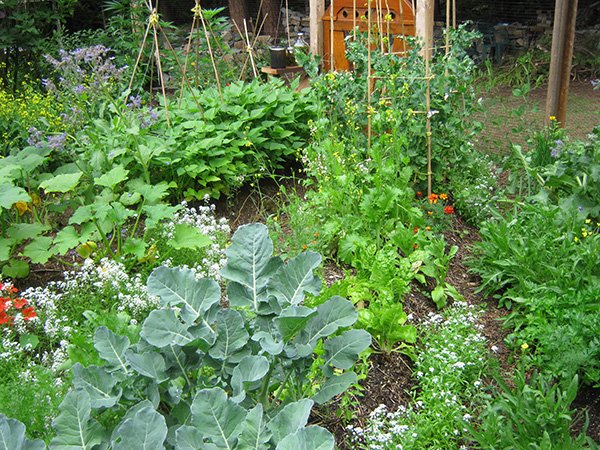Sustainable Gardening and Permaculture at Home: Cultivating a Greener Future
Introduction
As environmental concerns rise and the desire for self-sufficiency grows, more people are turning to sustainable gardening and permaculture. These practices provide fresh, organic produce, promote biodiversity, conserve resources, and reduce carbon footprint. By adopting sustainable gardening techniques and permaculture principles, individuals can create thriving ecosystems in their backyards.
What is Sustainable Gardening?
Sustainable gardening is the practice of growing food and plants to conserve resources and minimise environmental impact. It involves using methods that maintain soil health, reduce water usage, and promote biodiversity. Sustainable gardening often incorporates organic practices, such as avoiding synthetic chemicals and using natural fertilisers.
Key Principles of Sustainable Gardening
Soil Health Healthy soil is the foundation of sustainable gardening. Practices like composting, crop rotation, and mulching enrich the soil with nutrients, improve its structure, and support beneficial microorganisms. Avoiding chemical fertilisers and pesticides helps maintain the natural balance of the soil.
Water Conservation Efficient water use is crucial in sustainable gardening. Techniques such as rainwater harvesting, drip irrigation, and mulching help reduce water consumption. Selecting drought-resistant plants and watering during cooler parts of the day can further minimise water use.
Biodiversity Encouraging a diverse range of plants and animals creates a resilient garden ecosystem. Companion planting, intercropping, and planting native species attract beneficial insects and pollinators, enhance soil health, and prevent pest outbreaks.
Waste Reduction Reducing, reusing, and recycling garden waste is essential for sustainability. Composting kitchen scraps and garden waste creates rich organic matter that can be returned to the soil. Using reclaimed materials for garden structures and containers also reduces waste.
Introduction to Permaculture
Permaculture is a design philosophy that mimics natural ecosystems to create sustainable and self-sufficient human habitats. It integrates land, resources, people, and the environment through mutually beneficial relationships. Permaculture goes beyond gardening; it encompasses a holistic approach to living sustainably.
Principles of Permaculture
Observe and Interact Understanding the natural environment is the first step in permaculture. Observing the patterns and relationships in nature helps design systems that work with, rather than against, natural processes.
Catch and Store Energy Permaculture aims to capture and store energy, whether it’s sunlight, rainwater, or organic matter. Solar panels, rain barrels, and compost heaps are examples of how energy can be harnessed and stored for future use.
Obtain a Yield Ensuring that the garden provides a yield is essential for sustainability. This can include food, medicinal plants, or other resources that meet human needs while supporting the ecosystem.
Apply Self-Regulation and Accept Feedback Permaculture systems are designed to be self-regulating, with feedback loops that help maintain balance. Monitoring and adjusting practices based on feedback ensures long-term sustainability.
Use and Value Renewable Resources Prioritising renewable resources reduces dependency on finite ones. Solar energy, wind power, and sustainable timber are examples of renewable resources that can be integrated into a permaculture design.
Creating a Permaculture Garden at Home
Design with Zones Permaculture gardens are designed in zones, with the most frequently used elements placed closest to the home. This minimises effort and maximises efficiency. For example, herbs and vegetables that need regular attention are placed in Zone 1, while less frequently accessed areas, like orchards or woodlots, are in outer zones.
Build Soil Fertility Enhancing soil fertility is central to permaculture. Techniques like sheet mulching, composting, and green manures build healthy, nutrient-rich soil. Incorporating animals, such as chickens or bees, can also contribute to soil health and biodiversity.
Use Polyculture Unlike monoculture, where a single crop is grown, polyculture involves growing multiple crops together. This diversity mimics natural ecosystems, reduces pest and disease problems, and improves soil health.
Harvest Rainwater Capturing and storing rainwater reduces reliance on municipal water supplies. Rain barrels, swales, and ponds are effective ways to harvest and utilise rainwater in the garden.
Integrate Animals Animals play a vital role in permaculture systems. Chickens, for instance, provide eggs, help control pests, and fertilize the soil. Bees pollinate plants and produce honey, while fish in aquaponic systems provide nutrients for plants.
Conclusion
Sustainable gardening and permaculture offer practical solutions to environmental challenges while enhancing food security and self-sufficiency. By adopting these practices at home, individuals can create resilient, productive, and harmonious ecosystems. Embracing sustainable gardening and permaculture principles not only benefits personal health and well-being but also contributes to a healthier planet for future generations.

